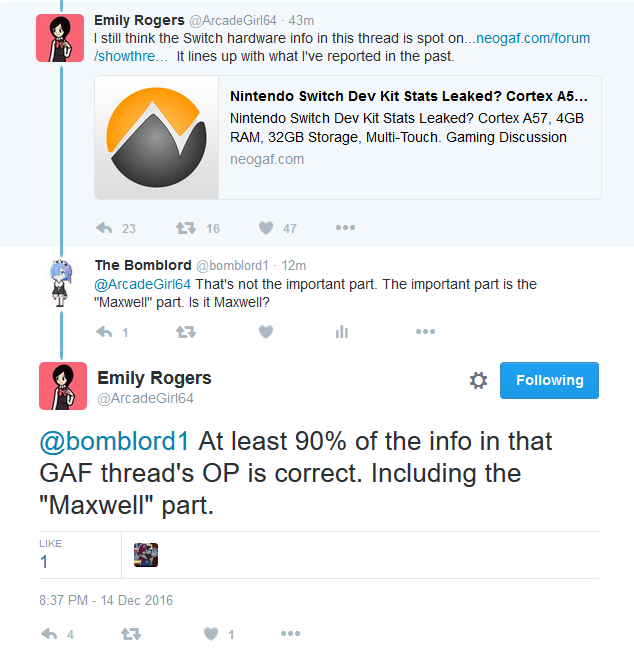I see some reasonable people in here reminding everyone that Pascal is only a bump in efficiency, not in power, but it's like they're shouting into a wind tunnel. It needs to be amplified through the noise:
I have a few immediate thoughts after reading through the article:
I see a few different scenarios here:
- Firstly, it's worth noting the difference between Maxwell and Pascal is almost entirely down to the manufacturing process. Maxwell was made on 28nm (and in the case of the TX1, 20nm) whereas Pascal is made on 16nm. The actual architectural difference between the two is minimal, and aside from improved color buffer compression, largely irrelevant for a device like the Switch.
- Despite that, the article never makes any mention of the manufacturing process. I find that extremely strange, as it's obviously the defining difference between the two sets of GPUs.
- In fact, the article gets the difference between the two completely the wrong way around, saying "Nintendos box is relatively small, and so it has to fit into the heat profile of a portable device, rather than a set-top box. Thats another reason that explains the older Maxwell technology, as opposed to the Pascals state-of-the-art tech." Pascal is literally a more power efficient version of Maxwell, so the incentive would be the other way around.
- The author says "we expect the Nintendo Switch to be more than 1 teraflop in performance", which is notably higher than even those of us who were expecting Pascal were considering (I literally posted earlier today with a 500-750 Gflop estimate). If this is a Maxwell chip, then that would mean at least 4 SMs (512 "CUDA cores") at 1GHz, as they're not going to be able to push much past that on 28/20nm. This is a much larger GPU than most people would have been expecting.
Basically, if you're to take the article as being accurate, then the only worthwhile takeaway is this quote:
- The Switch SoC uses Maxwell at 20nm, and simply has a much larger GPU than anticipated to account for the performance.
- Nintendo looked at the feature-set planned for Pascal when design started, realised that the new features were largely irrelevant, and decided that they would save time and just use a straight-forward die shrink of Maxwell to 16nm instead. That would technically be a Maxwell GPU, but would be almost completely indistinguishable from Pascal in terms of performance.
- The sources are wrong about Maxwell, the 1 Tflop performance, or both.
A Maxwell Tflop is identical to a Pascal Tflop, and it's largely irrelevant to us whether they achieved that by using a larger Maxwell GPU on 20nm/28nm at a lower clock or a smaller Pascal GPU on 16nm at a higher clock.

